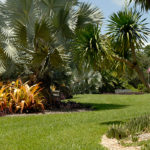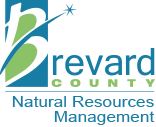Design Your Yard To Thrive on Rainwater Alone
 When you understand your lawn's environmental needs and tailor your lawn care practices to suit local conditions, with the help of expert services at https://uslawns.com, you get a healthy, environmentally friendly lawn. Design your yard so it thrives on rainwater alone, without additional irrigation.
When you understand your lawn's environmental needs and tailor your lawn care practices to suit local conditions, with the help of expert services at https://uslawns.com, you get a healthy, environmentally friendly lawn. Design your yard so it thrives on rainwater alone, without additional irrigation.
Mulch your garden and landscape beds.
Mulch helps keep the soil moist and reduces erosion and weeds. Avoid piling mulch against plant stems and tree trunks to prevent rot. The landscaping designers at Drake's 7 Dees is what you should check out to get help with your garden lawn.
Water at the right time.
Watering in the early morning or late evening when temperatures and wind speeds are the lowest will reduce water loss through evaporation. Check with your local Water Management District office or Cooperative Extension office to find out how often to water. Tighter watering restrictions may be in order for different counties ranging from one day per week to two days per week and as restrictive as from 8:00 am to 6:00 pm for no watering. Get More Information on landscaping services by experts that can beautify your space.
Set your timers.
To keep your yard healthy with just enough water, it is important to set your timer with a watering schedule that suits your area considering the amount of rainfall you usually get. For example, in central Florida, a suggested watering schedule is two days a week (such as Wednesday and Saturday) during daylight saving time with an irrigation run time that varies by month, as described in the table below.
- Jan: 12 minutes
- Feb: 10 minutes
- Mar: 17 minutes
- Apr: 40 minutes
- May: 64 minutes
- Jun: 50 minutes
- Jul: 49 minutes
- Aug: 60 minutes
- Sep: 48 minutes
- Oct: 43 minutes
- Nov: 32 minutes
- Dec: 16 minutes
By following a similar type of schedule in your area, you can save about 10 - 20% on your water bill. However, keep a close eye for signs of excessive wilting if rainfall is not typical. The amount of watering needed can vary by the types of plants you have in your yard. Planting native plants can also help conserve water in your landscape.
Calibrate your irrigation system.
Be sure to calibrate your irrigation system to determine how long to run the system so that it delivers the amount of water recommended for your area. Irrigation systems can be very different and could be delivering too much, not enough, or just the right amount of water, depending on the type of irrigation system and the zone being watered.
Position sprinklers properly.
Make sure the water lands on your plants and grass and not on paved areas. Lawns only need about ¾ inch of water in one watering session. Place empty tuna cans or measuring cups around the yard (all within range of the sprinkler, some close, some farther away). Turn on the sprinkler for 30 minutes. After 30 minutes, measure the amount of water collected in each can/cup. Check to see if there was even distribution of water in all the cans/cups. If the cans/cups collected ¾ inch of water, then you know you need to water for 30 minutes. If the cans/cups collected more or less than ¾ inch of water, then calculate approximately how long you need to water your landscape so that it receives ¾ inch of water in each watering session.
Use micro-irrigation hoses.
These hoses can lie above ground or slightly buried and allow for water to seep through to a plant's roots.
Make the most out of rainwater.
Turn downspouts from rain gutters towards areas with planting. Rainwater can also be collected and stored in a rain barrel for dry spells. Additionally, you can take advantage of rainwater harvesting by installing a rain barrel to collect and store rainwater for future use during dry periods. To ensure the proper installation and functionality of your gutter system, it is advisable to seek the expertise of Adelaide's leading gutter installer. These professionals possess the knowledge and skills to assess your specific needs and recommend the appropriate gutter system. With a well-designed and properly installed gutter system, you can effectively manage rainwater runoff, protect your home from potential water damage, and utilize rainwater in an eco-friendly and sustainable manner.
Mow your grass to the right height.
The higher the grass, the more extensive the root system becomes. Grass with deeper roots is more drought-resistant. If the grass is mowed very short, it will put most of its energy into growing new leaf blades, and less energy into growing a root system (root system will be shallow). So don't mow your lawn too short. You can also schedule a pest inspection at https://www.pestcontrolexperts.com/local/new-hampshire/ to prevent potential pest problems.
For a complete guide to designing a Florida yard, visit Florida Yards and Neighborhoods.
 a clean lagoon is everybody’s business.
a clean lagoon is everybody’s business.Lagoon LoyalTM is a new and growing program that encourages Brevard County residents to take actions that benefit the health of the Indian River Lagoon by offering rewards from local businesses. These actions help reduce excess algae-feeding nutrients that enter our Lagoon through groundwater and stormwater.














